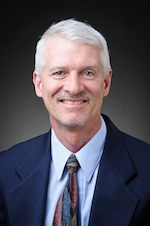Johnson Controls partners with UW-Madison to reduce commercial energy costs
Johnson Controls began when founder Warren Johnson invented the thermostat in 1885, and today the Milwaukee-based controls company is working toward another major innovation in heating and cooling in collaboration with UW–Madison chemical engineers.
A research group led by Jim Rawlings, the Paul A. Elfers professor and W. Harmon Ray professor of chemical and biological engineering, has partnered with Johnson Controls to develop better HVAC control systems for its clients in large commercial buildings.

Jim Rawlings
“Twenty percent of total U.S. energy consumption is commercial buildings,” Rawlings says. “And half of that is education and office spaces.”
The project — which is being tested at various sites, including the Johnson Controls building in Milwaukee and buildings on the Stanford University campus — will serve as a foundation for advancing HVAC control systems in general. Rawlings, chemical and biological engineering Professor Christos Maravelias and Ph.D. students Michael Risbeck and Nishith Patel are developing algorithms that will enable building managers to harness a broad range of data to run their HVAC systems more efficiently.
Building managers haven’t always had much data to inform decisions about heating and cooling, says Rawlings, but in recent years, it’s become easier to acquire the kind of data that work well for chemical engineering-related control processes. These data include energy pricing, weather forecasts, worker hours and the impacts of other potential heat sources in a building.
However, despite the availability of data, there is still no standard way to put together an HVAC system for a large building, and even within one building, that system might be composed of many disparate pieces of equipment and several different software control systems. To analyze and control the system as a whole — or optimize heating and cooling across an entire campus of buildings — the control framework has to be agnostic to the size and makeup of the system. The UW–Madison researchers are using a process-control method called model predictive control, which involves forecasting the future behavior of a system and taking those forecasts into account to make real-time adjustments.
“In the chemical industry, optimization has been a much more important part in the operation of chemical plants, because that’s your profitability, that’s the goal of the business,” Rawlings says. “So what the HVAC industry is able to do now is take advantage of all that development over the last 20 or 30 years in the chemical industry and bring it over to buildings.”
“I count on the university to be the pioneer in solving HVAC problems in new and innovative ways. It’s an infusion of high-tech into a low-tech space.”
Robert Turney
As the optimization algorithms pass through different revisions and iterations, Rawlings and his group gain an increasingly nuanced understanding of the real-world contexts in which their ideas are used. “You know how the building is running and you can look at how it ran a year ago, two years ago, 10 years ago, and you can detect things like equipment that is degrading, and you can find out what the use patterns are,” Rawlings says. “You can find out that over time, energy use in this building is rising or dropping, and you can start to ask what-if questions.”
Robert Turney, a Johnson Controls engineer and technical lead on the project, says the work is driven by client interest in cutting costs while implementing lofty goals for energy efficiency. He credits the UW–Madison researchers with helping the controls industry seize on new possibilities.
“I count on the university to be the pioneer in solving HVAC problems in new and innovative ways,” says Turney. “It’s an infusion of high-tech into a low-tech space.”
Enjoy this story?
Read more news from the College of EngineeringTags: College of Engineering, energy, engineering
